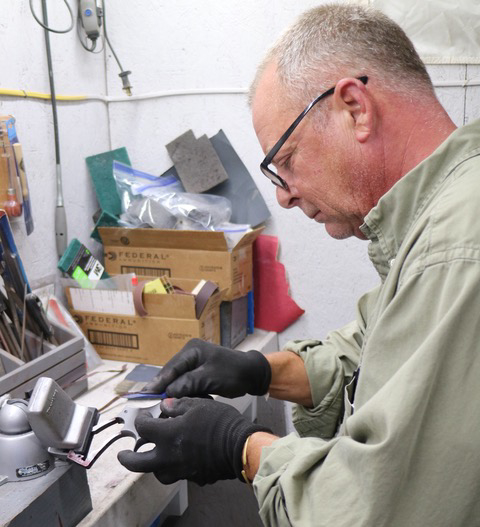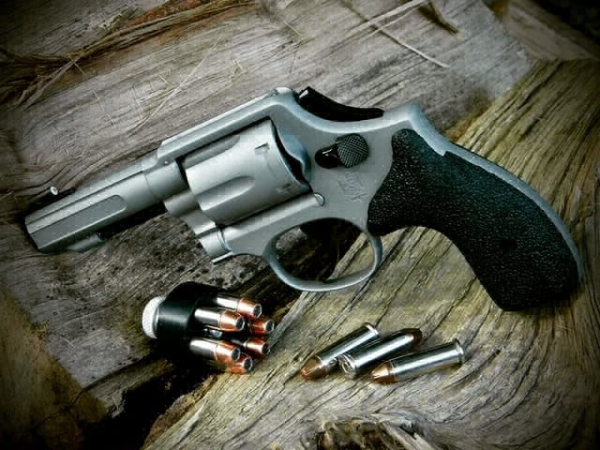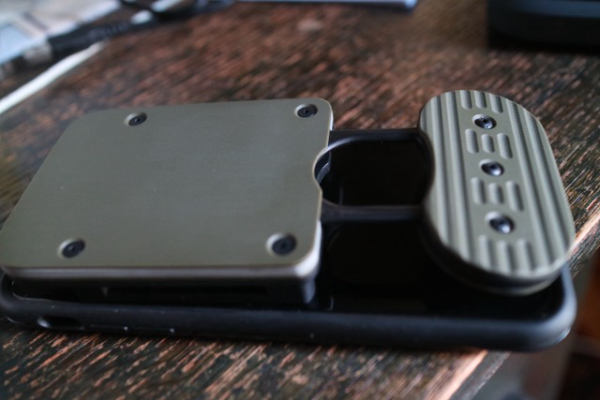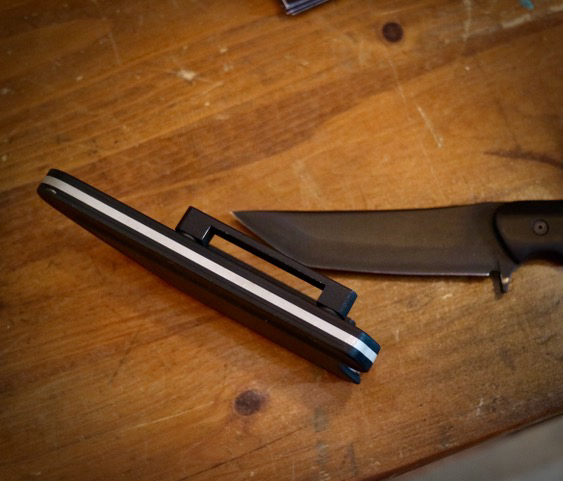Craftsmanship is something I respect. It’s one of the primary reasons that I enjoy covering almost every aspect of manufacturing.
From companies that regularly crank out hundreds of thousands of uniform cookies to the solo craftsman who turns out one-of-a-kind products, I’m intrigued. One impresses with the ability to scale up, the other for the ability to focus on the smallest detail.
They share the same goal: producing superior products. But view them from a completely different perspective. One eliminates variables to establish uniformity. The other celebrates variables, using them to create decidedly unique products. Both are expected to meet the same standard: reliable performance. The individually crafted product adds the desire to create one-offs that are similar, but designed to meet a single customer’s expectations. Every time.
Tiger McKee is a terrific trainer who also happens to be quite the craftsman. As he’s progressed through decades of training everyone from military and law enforcement officers to slow-to-change writers, he’s developed some ideas as to what ideal weapons would be. And in his typical learn-by-doing fashion, he’s turning out what he thinks is an ideal self-defense handgun and his own design of unique knives.
His ideal handgun? The revolver. Before you start tossing bricks, remember he’s not equipping a military unit. He’s a firm believer in the pistol, especially the 1911. But he’s building guns that are designed to be reliable as a hammer for someone who probably isn’t wearing it on a Sam Browne duty belt. The revolver fulfilled that mission admirably for many years, but it was replaced by the semiautomatic pistol for (mostly) good reasons.
That hasn’t diminished its reliability or dependability one iota. Today, heavy caliber handgun hunters, wilderness guides, and many homeowners still look to the “wheelgun” when they want something dependable when their lives may depend on it.
McKee isn’t one to reinvent the wheel(gun). But there’s no reluctance to change things when he believes they’re improvements. That’s his modus operandi. When we were talking, he looked at me and said “our motto is fancy isn’t for us” - and he wasn’t kidding. Everything he makes, from his “chopper” fighting revolver to his knives could be from the Frank Lloyd Right school of architecture: form and function. You’re not going to find a Bunny Williams “color pop” in either design.
His “chopper” starts with a 4-inch K-frame S&W revolver. If you have a sad old beater like that in your safe that shoots, but looks ratty, you have the basic unit. When he gets it, he takes it apart, chops the barrel to 2 1/2 inches, changes the square contour to a round butt (easier to conceal and better grip for most hands), takes metal away from the trigger guard (quicker to get your finger onto the trigger), and starts replacing parts. He also “melts” the sharp edges, bobs the hammer, and turns a square configuration into one that just seems to fit your hand like the proverbial glove.


The application of what he’s learned by experience shows in the finished product. He likes XS Sights, but realizes not everyone agrees. He builds the chopper with them, but has a machined mount that makes it simple for anyone to change them if they’d like. It’s an additional step, but one that makes the gun even more user-friendly. His is bead blasted and finished with black accents. The reasoning’s simple “you can throw it into the bead blast cabinet and about ten minutes later, it looks brand new.”
The fact there aren’t any finished Choppers lying around tells you what you need to know about demand. He works with a single apprentice, and they build the revolvers and the very nice knives that are also gaining a reputation for fit, finish and function.
When I asked him about a “show piece” to photograph, he smilingly told me, “one of these days I have to get ahead so I can build a couple of show pieces. Seems like as soon as I finish one and someone sees it, it’s bought and I’m back on the bench.”



When I asked about knives, he said he had a couple ready to ship and one new design -a belt-worn push knife- he could show me. They were both awesome, and used G10 in their sheaths. He’s using the material primarily seen in grip making because he’s found it extremely durable.
I reluctantly gave back the four-inch knife you see in the photo. The push knife? It came home with me. Fortunately (for my bank account), there weren’t any Choppers available. But I’m now on the hunt for a “beater” K-frame so I can add to his workload. If -or when- I do, I’m going to add one option that’s unique to his revolvers: if you buy one, you can get him to give you a private class on how to use it. That’s an option I’d find hard to pass up.
We’ll keep you posted.
—JIm Shepherd